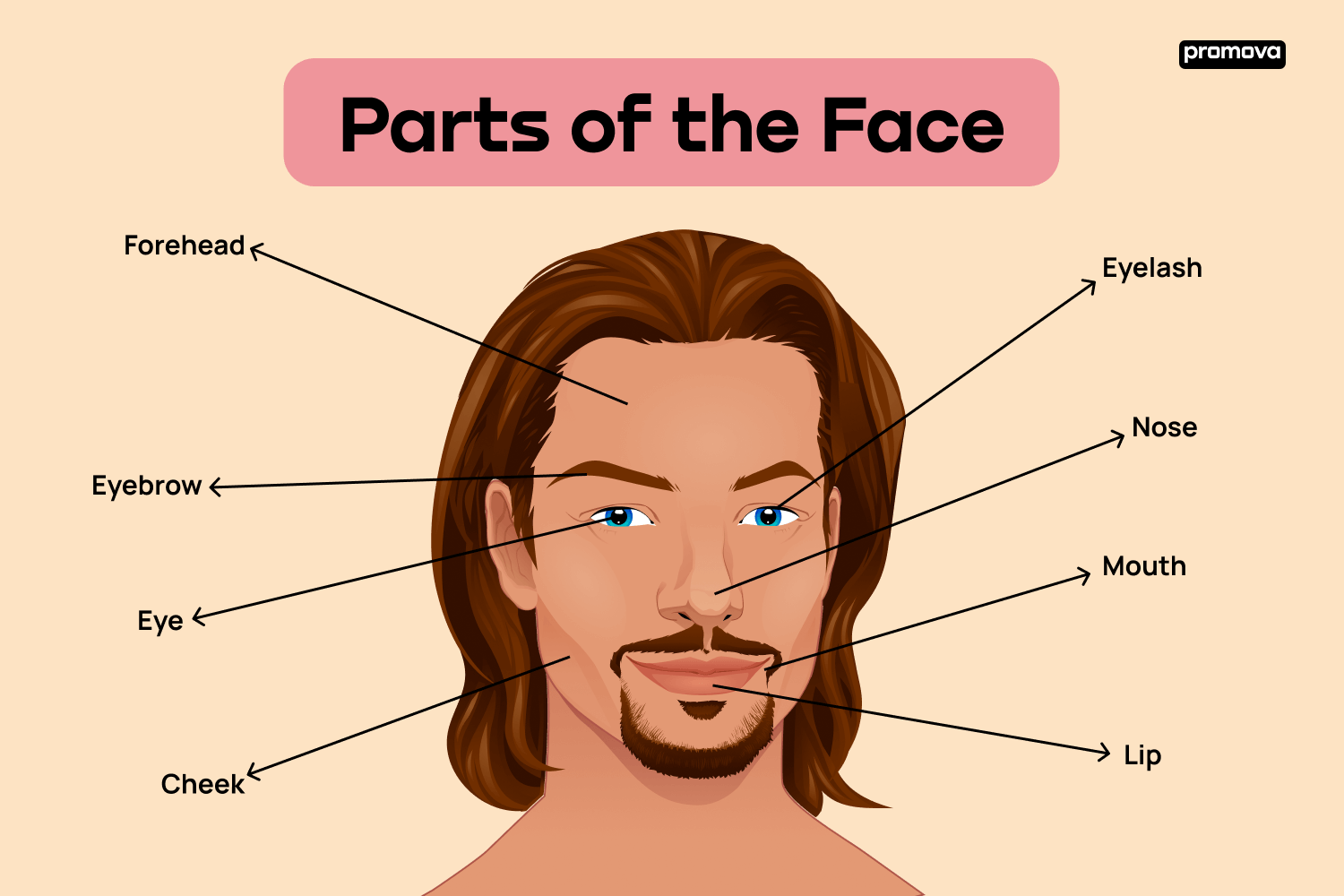Parts of the Face in English
Contenido
When learning a new language, one of the most fundamental topics is understanding vocabulary related to the human body, specifically the face. This article will delve into various parts of the face and provide brief definitions to guide language learners.

The Frontal Parts of the Face
When meeting someone for the first time, the frontal features of their face often make the most significant impression; they're the most visible and expressive parts. As you learn these parts of the face, visualize each part to reinforce your understanding.
- Forehead: the area of the face above the eyebrows and below the hairline; often prominent and expressive in emotions.
- Eyebrow: the strip of hair above each eye; can be thin, thick, or arched, and play an important role in facial expressions.
- Eye: the organ of sight; composed of the iris, pupil, and sclera.
- Eyelash: short hairs growing on the edge of the eyelids; protect the eyes from debris.
- Nose: the organ of smell and breathing; positioned in the center of the face.
- Cheek: the fleshy part of the face below the eyes and between the nose and ear.
- Mouth: the opening in the face used for speaking, eating, and breathing; consists of lips, teeth, and tongue.
- Lip: the soft, movable parts forming the opening of the mouth; often red or pinkish in humans.
Understanding the frontal face parts is crucial for describing someone's appearance or expressing certain emotions. Make sure to practice using them in sentences to enhance your language skills. Whether you're reading a novel, watching a movie, or engaging in conversation, you'll notice these terms frequently.
The Side and Lower Face Parts
Moving beyond the immediate front of the face, you'll find parts that provide more depth to facial descriptions. For language learners, mastering these face parts will add nuance to your understanding.
- Ear: the organ of hearing; typically protrudes slightly from the side of the head.
- Temple: the flat region on each side of the forehead; can be sensitive to touch.
- Jaw: the bony structure that frames the mouth; hinges with the skull to open and close the mouth.
- Chin: the protruding part at the bottom of the face; below the lower lip.
The side and lower face parts play crucial roles not just in appearance but also in function. They aid in hearing, eating, and showing emotions. By incorporating them into your vocabulary, you can convey more detailed and rich descriptions.
12
Auxiliary Features
These parts of your face may not always be the first you notice, but they enrich the overall facial landscape. Familiarizing yourself with these face parts will give you a more comprehensive vocabulary toolkit.
- Wrinkle: a small line or fold in the skin; often due to age, expressions, or sun exposure.
- Freckle: a small, brownish spot on the skin; often from sun exposure or genetics.
- Mole: a small, dark spot or lump on the skin; can be flat or raised.
- Pimple: a small, red, swollen spot on the skin; often filled with pus and caused by clogged pores.
- Scar: a mark left on the skin after a wound heals; can be raised, flat, or indented.
Though auxiliary features might seem minor, they can be significant when describing someone in detail. Whether mentioning a beloved freckle or a significant scar, these face parts names provide depth and specificity to descriptions.
Miscellaneous Terms for Parts of the Face
While the primary features dominate most descriptions, diving deeper into the nuances of facial vocabulary can elevate your understanding. Here are more terms to consider:
- Philtrum: the vertical groove between the base of the nose and the border of the upper lip; often overlooked but distinct in many individuals.
- Nostril: one of the two openings of the nose; responsible for intake and exhaust of air.
- Canthus: the corner where the upper and lower eyelids meet; there's an inner and an outer canthus.
- Iris: the colored part of the eye, which surrounds the pupil and regulates the amount of light entering the eye.
- Pupil: the black circular opening in the center of the iris; it expands and contracts to adjust the light intake.
- Sclera: the white part of the eye; serves as protection and structure for the eye.
- Cleft chin: a chin with a Y-shaped dimple in the middle; often considered a genetic trait.
- Dimple: a small natural indentation in the cheek or chin; seen when smiling for some individuals.
- Adam's apple: the protrusion in the neck, more visible in males; it's the front of the thyroid cartilage of the larynx.
- Tear duct: the tiny opening in the inner corner of the eyelid; responsible for draining tears away.
Familiarizing yourself with these additional face parts names will undoubtedly enhance your descriptions, especially in more detailed narratives or observations. Like the primary features, these face parts have their place in language, giving a well-rounded perspective of the face.
Conclusion
Mastering vocabulary related to parts of the face is an essential step for language learners. It aids in understanding descriptions, expressing oneself, and enriching conversations. As you continue your language journey, refer back to this guide and practice using these terms to enhance your proficiency and confidence.
Comentarios